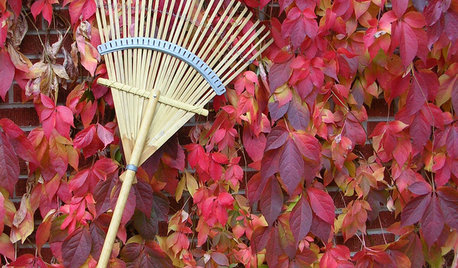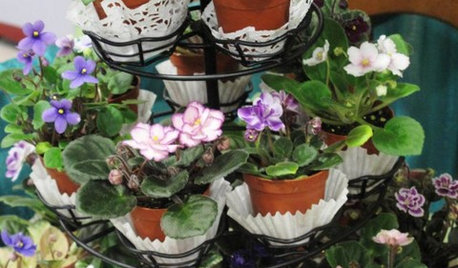Leaf streak vs. rust
natalie4b
12 years ago
Related Stories

PATIOSPatio Details: A Custom Aluminum Arbor Cools Things Down in Texas
Panels in the roof have leaf pattern cutouts that create dappled shade and a calm, relaxed ambience
Full Story
GARDENING GUIDESBackyard Birds: Create a Home for American Kestrels
These copper-colored birds of prey can be found throughout North and South America and often find habitats near human activity
Full Story
THE ART OF ARCHITECTURELaser-Cut Focus: The Future of Design Is Here
Discover how this laser technology can make almost any pattern a reality
Full Story
DECORATING STYLES8 Ways to Lasso Lone Star State Style
Rustle up a romance with the Old West for a home that makes a big decorating statement
Full Story
HOUZZ TOURSMy Houzz: Vintage Furnishings With Stories to Match
A photographer and a musician make their 600-square-foot Seattle apartment their home with carefully curated secondhand finds
Full Story
GARDENING GUIDESYour November Garden Checklist
What to do around the U.S. this month to help your garden thrive — when you're not admiring fall's brilliant colors, that is
Full Story
GREENColor Combinations: Brown and Green
Take Your Cue from Nature for the Most Classic Color Combination of All
Full Story
PLANTING IDEASGreat Garden Combo: A Fall Landscape Scene That Lasts
Span the seasons with trees, shrubs and grasses that offer color and texture in abundance
Full Story
HOUSEPLANTSRetro Houseplants Get a New Look
The wild and crazy houseplants of the 1970s make a splash in today's interiors
Full Story
LANDSCAPE DESIGNHow to Design a Coast-Loving Garden That Lasts
Good looks and longevity go hand in hand with these plants, materials and colors to make your coastal landscape easy-breezy
Full Story





dementieva
natalie4bOriginal Author
Related Discussions
What causes white streaks in flowers?
Q
Cure daylily leaf streak? not rust, I think....
Q
Daylily leaf streak
Q
Leaf streak
Q
floota
polymerous
floota
polymerous
natalie4bOriginal Author
Ed
anniegolden
polymerous
polymerous
polymerous
anniegolden
dementieva
Ed
polymerous
Ed
polymerous
dementieva
Ed
floota
Ed
polymerous
dementieva
Ed
polymerous
dementieva